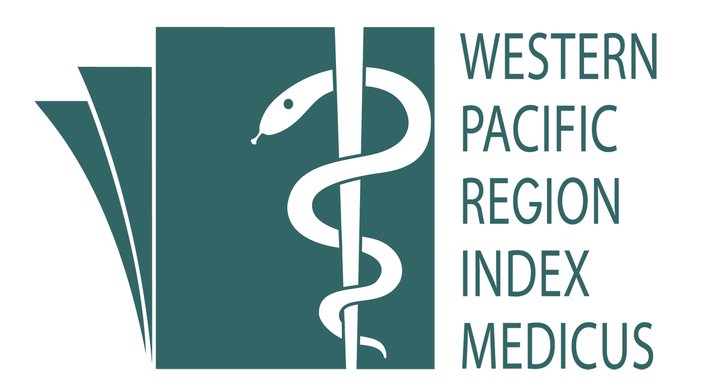Environmental Factors Contributing to Stunting among Under Six Years Old Children: A Scoping Review
Keywords:
Stunting, Under 6 years old children, Environmental factors, Children’s healthAbstract
Stunting among preschool children is a serious public health issue worldwide. It is one of the major risk factors for poor physical and mental development of these children. Children’s health and wellbeing are impacted by exposure to unhealthy environment and a lack of stimulating activities especially in low- and middle-income countries ultimately contribute to the increase in the number of stunted children. This scoping review aims to identify environmental factors that contribute to stunting among preschool children. We used PRISMA-ScR to search Scopus, PubMed, and Web of Science databases. We included all English language research on environmental factors associated to stunting among preschool children. Data synthesised were charted and summarized. A total of 65 articles were reviewed and finally 25 eligible studies were included in this review. The included studies showed that unimproved access to safe water source, lack of improved sanitation and poor hygiene practice are associated with higher risk of stunting among preschool children. Apart from that, improper solid waste management, area and type of housing, poor quality cooking fuels and air quality, presence of intestinal parasitic infection and increased blood lead levels, were also noted as potential environmental factors affecting stunting. Stunting is linked to various environmental factors in varying degrees. Health promotion activities related to environmental factors need to be improved and expanded in addition to nutritional intervention to prevent stunting. Sound preventive measures through available policies, strategies, interventions, technologies and knowledge may reduce the case of stunting among children and improve the health outcome.
References
WHO. Fact Sheets: Malnutrition. 2020. Accessed Dec 17, 2022. Available from: https://www.who.int/news-room/fact-sheets/detail/malnutrition
WHO. Stunting in a Nutshell. 2015 Accessed Dec 16, 2022. Available from: https://www.who.int/news/item/19-11-2015-stunting-in-a-nutshel
World Health Organization (WHO). Childhood Stunting: Context, Causes, and Consequences. World Health Organization. 2019 Accessed Dec 17, 2022. Available from: https://www.who.int/publications/m/item/childhood-stunting-context-causes-and-consequences-framework
Danaei G, Andrews KG, Sudfeld CR, Fink G, McCoy DC, Peet E, et al. Risk Factors for Childhood Stunting in 137 Developing Countries: A Comparative Risk Assessment Analysis at Global, Regional, and Country Levels. PLoS Med. 2016;13(11):1–18.
WHO. Stunted Growth and Development Genave. 2017; 6. Accessed Dec 16, 2022. Available from: https://www.who.int/nutrition/childhood_stunting_framework_leaflet_en.pdf
Margolies A, Gelli A, Daryanani R, Twalibu A, Levin C. When Communities Pull Their Weight: The Economic Costs of an Integrated Agriculture and Nutrition Home-Grown Preschool Meal Intervention in Malawi. Food Nutr Bull. 2021;42(1):3–22.
Heckert J, Leroy JL, Olney DK, Richter S, Iruhiriye E, Ruel MT. The cost of improving nutritional outcomes through food-assisted maternal and child health and nutrition programmes in Burundi and Guatemala. Matern Child Nutr. 2020;16(1):1–16.
Young N, Bowman A, Swedin K, Collins J, Blair-Stahn ND, Lindstedt PA, et al. Cost-effectiveness of antenatal multiple micronutrients and balanced energy protein supplementation compared to iron and folic acid supplementation in India, Pakistan, Mali, and Tanzania: A dynamic microsimulation study. PLoS Med. 2022;19(2):1–22. Available from: http://dx.doi.org/10.1371/journal.pmed.1003902
Soliman A, De Sanctis V, Alaaraj N, Ahmed S, Alyafei F, Hamed N, et al. Early and long-term consequences of nutritional stunting: From childhood to adulthood. Acta Biomed. 2021;92(1):1–12.
Prendergast AJ, Humphrey JH. The stunting syndrome in developing countries. Paediatr Int Child Health. 2014;34(4):250–65.
WHO. Childhood Stunting: Context, Causes and Consequences - Conceptual framework. 2020;9. Accessed Dec 17, 2022. Available from: https://www.who.int/publications/m/item/childhood-stunting-context-causes-and-consequences-framework
Dictionary M webster.co. Environment. Accessed Feb 7, 2024. Available from: https://www.merriam-webster.com/dictionary/environmental
Ahmad S, Abid J, Muhammad N, Wasila H, Zaitoun M, Awudi DA. Prevalence and factors associated with undernutrition among 6-59 months children in Tehsil Battagram, Pakistan. 2022;1535–43.
How ETC, Shahar S, Robinson F, bin Manah AM, Ibrahim MY, Jeffree MS, et al. Risk factors for undernutrition in children under five years of age in Tenom, Sabah, Malaysia. Malaysian J Public Heal Med. 2020;20(1):71–81.
Bustos AR, Rebancos CM, Barba CV, Molina VB, Paunlagui MM, Tandang NA. Environmental enteric dysfunction, soil transmitted helminthiasis and stunting among 36- to 59-month-old children in Quezon Province, Philippines. Malays J Nutr. 2021;27(2):221–31.
Rukambile E, Muscatello G, Sintchenko V, Thomson PC, Maulaga W. Determinants of diarrhoeal diseases and height-for-age z -scores in children under five years of age in rural central Tanzania. 2020;409–23.
Wana EW, Tesfaye GA. Chronic Undernutrition and Associated Factors Among Children Aged 6 to 59 Months in South Ari , South Omo Zone , Ethiopia: A Community-Based Cross-Sectional Study. 2023;9:1–8.
Mostafa I, Naila NN, Mahfuz M, Roy M, Faruque ASG, Ahmed T. Children living in the slums of Bangladesh face risks from unsafe food and water and stunted growth is common. 2018;1230–9.
Sema B, Azage M, Tirfie M. Childhood stunting and associated factors among irrigation and non-irrigation user northwest, Ethiopia: a comparative cross-sectional study. Ital J Pediatr. 2021;47(1):1–11.
Blankenship JL, Cashin J, Nguyen TT, Ip H. Childhood stunting and wasting in Myanmar: Key drivers and implications for policies and programmes. Matern Child Nutr. 2020;16(S2):1–8.
Irawati Y, Kusnoputranto H, Achmadi UF, Safrudin A, Sitorus A, Risandi R, et al. Blood lead levels and lead toxicity in children aged 1-5 years of Cinangka Village, Bogor Regency. PLoS One. 2022;17(2):1–13. Available from: http://dx.doi.org/10.1371/journal.pone.0264209
Ndagijimana S, Kabano I NJ. Analysis of risk factors that influence stunting among Rwandan children under the age of five. 2022;22(5):20480–97.
Gupta RK, Bansal M, Chouksey M, Shukla D, Mungi S. Assessment of Nutritional Status and its Determinants among Under-five Children in Urban Slum Areas of Gwalior City , Central India. 2021;15(6).
Rocky M, Chowdhury K, Khan HTA, Rashid M, Kabir R, Islam S, et al. Differences in risk factors associated with single and multiple concurrent forms of undernutrition (stunting, wasting or underweight) among children under 5 in Bangladesh: a nationally representative cross- sectional study. 2021;141:1–16.
Id YD, Id GL, Stefanie D, Id UF, Ariawan I, Id TS. Soil-transmitted helminth infection, anemia,and malnutrition among preschool-age children in Nangapanda subdistrict, Indonesia. 2021;160:1–16. Available from: http://dx.doi.org/10.1371/journal.pntd.0009506
Vonaesch P, Ghislain S, Kaleb D, Estimé J, Maheninasy K. Factors Associated with Stunted Growth in Children Under Five Years in Antananarivo, Madagascar and Bangui, Central African Republic. 2021;1626–37.
Fufa DA. Determinants of stunting in children under five years in dibate district of Ethiopia: A case-control study. Hum Nutr Metab. 2022;30(1):200162. Available from: https://doi.org/10.1016/j.hnm.2022.200162
Clarke K, Rivas AC, Milletich S, Sabo-attwood T, Coker ES. Prenatal Exposure to Ambient PM 2.5 and Early Childhood Growth Impairment Risk in East Africa. 2022.
Ahmadi S, Botton J, Zoumenou R, Ayotte P, Fievet N, Massougbodji A, et al. Lead Exposure in Infancy and Subsequent Growth in Beninese Children. Toxics. 2022;10(10):1–13.
Humphrey JH, Mbuya MNN, Ntozini R, Moulton LH, Stoltzfus RJ, Tavengwa N V, et al. Articles Independent and combined effects of improved water, sanitation, and hygiene, and improved complementary feeding, on child stunting and anaemia in rural Zimbabwe: a cluster-randomised trial. 2019;132–47.
Ademas A, Adane M, Keleb A, Berihun G, Tesfaw G. Water, sanitation, and hygiene as a priority intervention for stunting in under-five children in northwest Ethiopia: a community-based cross-sectional study. Ital J Pediatr. 2021;47(1):1–11.
Muche A, Melaku MS, Amsalu ET, Adane M. Using geographically weighted regression analysis to cluster under-nutrition and its predictors among under-five children in Ethiopia: Evidence from demographic and health survey. 2021;(2). Available from: http://dx.doi.org/10.1371/journal.pone.0248156
Takele K, Zewotir T, Ndanguza D. Understanding correlates of child stunting in Ethiopia using generalized linear mixed models. 2019;1–8.
Ainy FN, Susanto T, Maningrum LAS. Nursing Practice Today. 2021; 2021;8(3):173–8.
Berger J, Poirot E. Stunting, Beyond Acute Diarrhoea: Giardia Duodenalis, in Cambodia. 2018;1–15.
Gizaw Z, Yalew AW, Bitew BD, Lee J, Bisesi M. Stunting among children aged 24 – 59 months and associations with sanitation, enteric infections, and environmental enteric dysfunction in rural northwest Ethiopia. Sci Rep. 2022;1–11. Available from: https://doi.org/10.1038/s41598-022-23981-5
Hall J, Walton M, Ogtrop F Van, Guest D, Black K, Beardsley J. Factors influencing undernutrition among children under 5 years from growing communities in Bougainville. 2020;1–10.
Arksey H, O’Malley L. Scoping studies: Towards a methodological framework. Int J Soc Res Methodol Theory Pract. 2005;8(1):19–32.
Tricco AC, Lillie E, Zarin W, O’Brien KK, Colquhoun H, Levac D, et al. PRISMA extension for scoping reviews (PRISMA-ScR): Checklist and explanation. Ann Intern Med. 2018;169(7):467–73.
World Health Organization. Improved sanitation facilities and drinking-water sources. World Health Organization. 2023 (cited 2023 Dec 19). Available from: https://www.who.int/data/nutrition/nlis/info/improved-sanitation-facilities-and-drinking- watersources#:~:text=Improved drinking-water sources are,protect
Wardhaugh J. Rural homelessness in india. International Encyclopedia of Housing and Home. Elsevier Ltd. 2012;6: 216–225 Available from: http://dx.doi.org/10.1016/B978-0-08-047163-1.00340-4
Bansal E, Hsu HH, de Water E, Martínez-Medina S, Schnaas L, Just AC, et al. Prenatal PM2.5 exposure in the second and third trimesters predicts neurocognitive performance at age 9–10 years: A cohort study of Mexico City children. Environ Res. 2021;202:1–31.
Tiwari M, Sahu SK, Bhangare RC, Yousaf A, Pandit GG. Particle size distributions of ultrafine combustion aerosols generated from household fuels. Atmos Pollut Res. 2014;5(1):145–50. Available from: http://dx.doi.org/10.5094/APR.2014.018
deSouza PN, Hammer M, Anthamatten P, Kinney PL, Kim R, Subramanian S V., et al. Impact of air pollution on stunting among children in Africa. Environ Heal A Glob Access Sci Source. 2022;21(1):1–13. Available from: https://doi.org/10.1186/s12940-022-00943-y
Jackson BD, Black RE. A literature review of the effect of malaria on stunting. J Nutr. 2017;147(11):2163S-2168S.
Keats EC, Kajjura RB, Ataullahjan A, Islam M, Cheng B, Somaskandan A, et al. Malaria reduction drives childhood stunting decline in Uganda: A mixed-methods country case study. Am J Clin Nutr. 2022;115(6):1559–68.
Gari T, Loha E, Deressa W, Solomon T, Lindtjørn B. Malaria increased the risk of stunting and wasting among young children in Ethiopia: Results of a cohort study. PLoS One. 2018;13(1):1–16.
AM RAS, Suhartono S, Nurjazuli. Risk Factors for Lead (Pb) And Cadmium (Cd) Exposure to Stunting in Toddlers: A Systematic Review. J Serambi Eng. 2023;VIII(1):4555–63. Available from: https://ojs.serambimekkah.ac.id/jse/article/view/5559
Downloads
Published
How to Cite
Issue
Section
License
Copyright (c) 2025 Nazmeen Adline Fawwazah A Fauzi, Idayu Badilla Idris, Zaleha Md Isa, Nur Fadhilah Mohd Razib

This work is licensed under a Creative Commons Attribution-NonCommercial 4.0 International License.
IJPHR applies the Creative Commons Attribution (CC BY) license to articles and other works we publish. If you submit your paper for publication by IJPHR, you agree to have the CC BY license applied to your work. Under this Open Access license, you as the author agree that anyone can reuse your article in whole or part for any purpose, for free, even for commercial purposes. Anyone may copy, distribute, or reuse the content as long as the author and original source are properly cited. This facilitates freedom in re-use and also ensures that IJPHR content can be mined without barriers for the needs of research.






